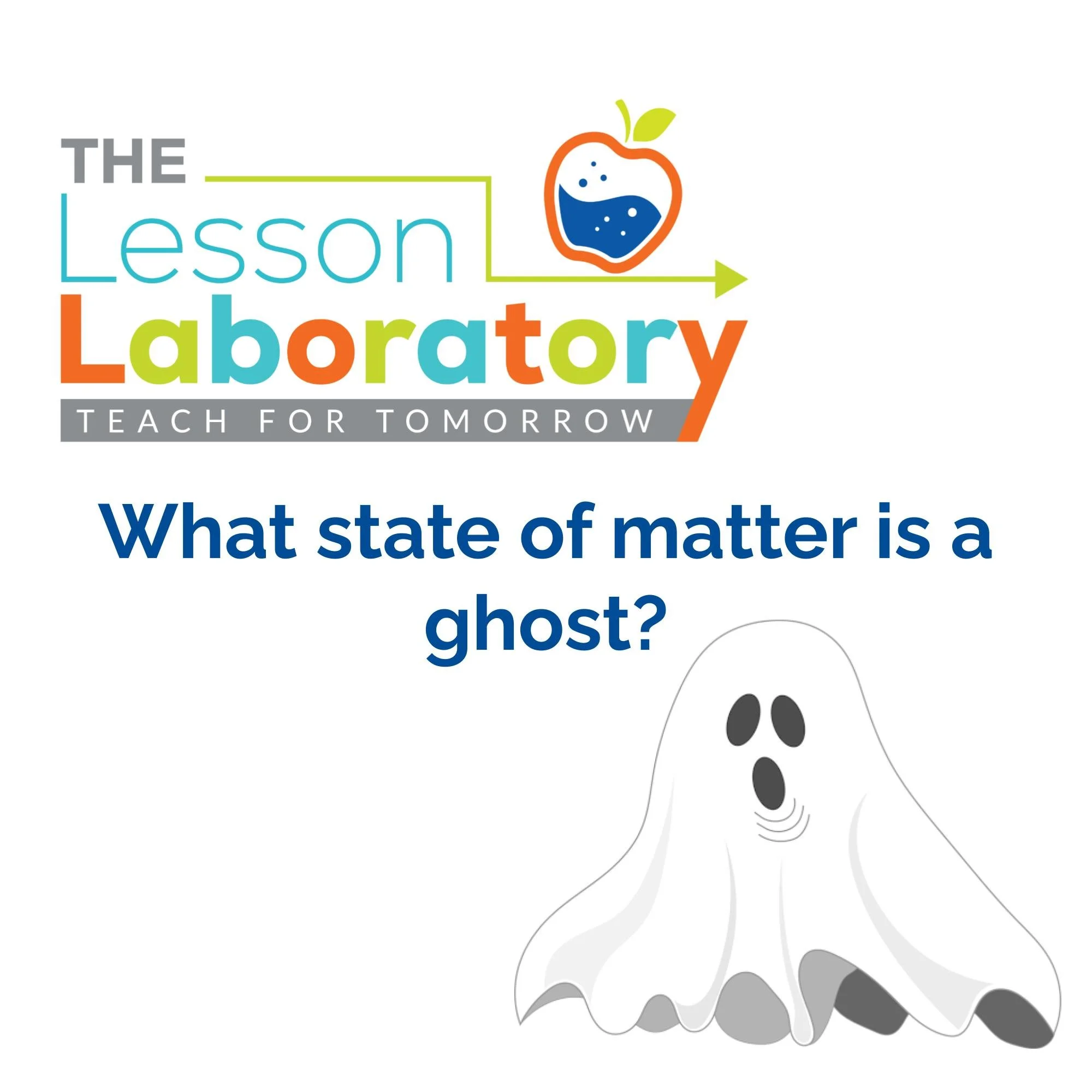



What state of matter is a ghost?
What State of Matter Is a Ghost? — Interactive Digital Lesson on States of Matter
Bring science to life (or the afterlife 👻) with this interactive digital lesson that gets students thinking critically about the states of matter through an imaginative question: What state of matter is a ghost?
Students begin by predicting how molecules behave in solids, liquids, gases, and plasma before diving into a PhET simulation that visually models particle motion. Animated GIFs and pop culture clips from Ghostbusters and Mickey’s Christmas Carol add humor and clarity, helping students visualize molecular movement and energy changes while keeping engagement sky-high.
Throughout the lesson, students gather and evaluate scientific “evidence” to build and defend their claim about what state of matter a ghost might be—if it exists at all!
What’s Included:
Interactive digital lesson (Google Slides or compatible format)
Student prediction activity and evidence organizer
Embedded PhET simulation link
Engaging GIFs and short video clips to support conceptual understanding
Skills Covered:
Identifying properties and particle behavior of different states of matter
Analyzing models and simulations
Constructing evidence-based scientific claims
Engaging in scientific argumentation and reasoning
Turn curiosity into conceptual understanding with this imaginative, media-rich lesson that combines science, humor, and inquiry— because sometimes, the best science questions start with a “what if?” 👻
Grade & Course Recommendation:
Middle School: Grades 6–8 Physical Science, states of matter and particle motion.
High School: Grades 9–10 Chemistry or Physics, review of kinetic theory and phase transitions.
Cross-Curricular Connections:
ELA Integration: Creative reasoning supported by scientific evidence.
Pop Culture Integration: Uses media clips (“Ghostbusters,” “Mickey’s Christmas Carol”) to analyze science in fiction.
Technology Integration: Interactive digital exploration using PhET simulations.
Daily slide + literacy - based exit ticket included with purchase
Join the Lesson Laboratory and Teach for Tomorrow!
NGSS (Next Generation Science Standards)
Middle School (MS):
MS-PS1-4: Develop a model that predicts and describes changes in particle motion, temperature, and state of a pure substance when thermal energy is added or removed.
MS-PS1-2: Analyze and interpret data on the properties of substances before and after interactions to determine if a chemical reaction has occurred. (connection: distinguishing states of matter based on observable properties)
Science & Engineering Practices: Developing and using models; Analyzing and interpreting data.
Crosscutting Concepts: Structure and properties of matter; Patterns; Cause and effect.
High School (HS):
HS-PS1-3: Plan and conduct an investigation to gather evidence to compare the structure of substances at the bulk scale to infer the strength of electrical forces between particles. (connection: why gases, liquids, solids, and plasma behave differently)
HS-PS1-1: Use the periodic table as a model to predict the relative properties of elements based on the patterns of electrons in the outermost energy level of atoms. (connection: properties of matter across states ultimately rooted in atomic structure)
Science & Engineering Practices: Constructing explanations; Using models.
Crosscutting Concepts: Structure and function; Energy and matter.
What State of Matter Is a Ghost? — Interactive Digital Lesson on States of Matter
Bring science to life (or the afterlife 👻) with this interactive digital lesson that gets students thinking critically about the states of matter through an imaginative question: What state of matter is a ghost?
Students begin by predicting how molecules behave in solids, liquids, gases, and plasma before diving into a PhET simulation that visually models particle motion. Animated GIFs and pop culture clips from Ghostbusters and Mickey’s Christmas Carol add humor and clarity, helping students visualize molecular movement and energy changes while keeping engagement sky-high.
Throughout the lesson, students gather and evaluate scientific “evidence” to build and defend their claim about what state of matter a ghost might be—if it exists at all!
What’s Included:
Interactive digital lesson (Google Slides or compatible format)
Student prediction activity and evidence organizer
Embedded PhET simulation link
Engaging GIFs and short video clips to support conceptual understanding
Skills Covered:
Identifying properties and particle behavior of different states of matter
Analyzing models and simulations
Constructing evidence-based scientific claims
Engaging in scientific argumentation and reasoning
Turn curiosity into conceptual understanding with this imaginative, media-rich lesson that combines science, humor, and inquiry— because sometimes, the best science questions start with a “what if?” 👻
Grade & Course Recommendation:
Middle School: Grades 6–8 Physical Science, states of matter and particle motion.
High School: Grades 9–10 Chemistry or Physics, review of kinetic theory and phase transitions.
Cross-Curricular Connections:
ELA Integration: Creative reasoning supported by scientific evidence.
Pop Culture Integration: Uses media clips (“Ghostbusters,” “Mickey’s Christmas Carol”) to analyze science in fiction.
Technology Integration: Interactive digital exploration using PhET simulations.
Daily slide + literacy - based exit ticket included with purchase
Join the Lesson Laboratory and Teach for Tomorrow!
NGSS (Next Generation Science Standards)
Middle School (MS):
MS-PS1-4: Develop a model that predicts and describes changes in particle motion, temperature, and state of a pure substance when thermal energy is added or removed.
MS-PS1-2: Analyze and interpret data on the properties of substances before and after interactions to determine if a chemical reaction has occurred. (connection: distinguishing states of matter based on observable properties)
Science & Engineering Practices: Developing and using models; Analyzing and interpreting data.
Crosscutting Concepts: Structure and properties of matter; Patterns; Cause and effect.
High School (HS):
HS-PS1-3: Plan and conduct an investigation to gather evidence to compare the structure of substances at the bulk scale to infer the strength of electrical forces between particles. (connection: why gases, liquids, solids, and plasma behave differently)
HS-PS1-1: Use the periodic table as a model to predict the relative properties of elements based on the patterns of electrons in the outermost energy level of atoms. (connection: properties of matter across states ultimately rooted in atomic structure)
Science & Engineering Practices: Constructing explanations; Using models.
Crosscutting Concepts: Structure and function; Energy and matter.